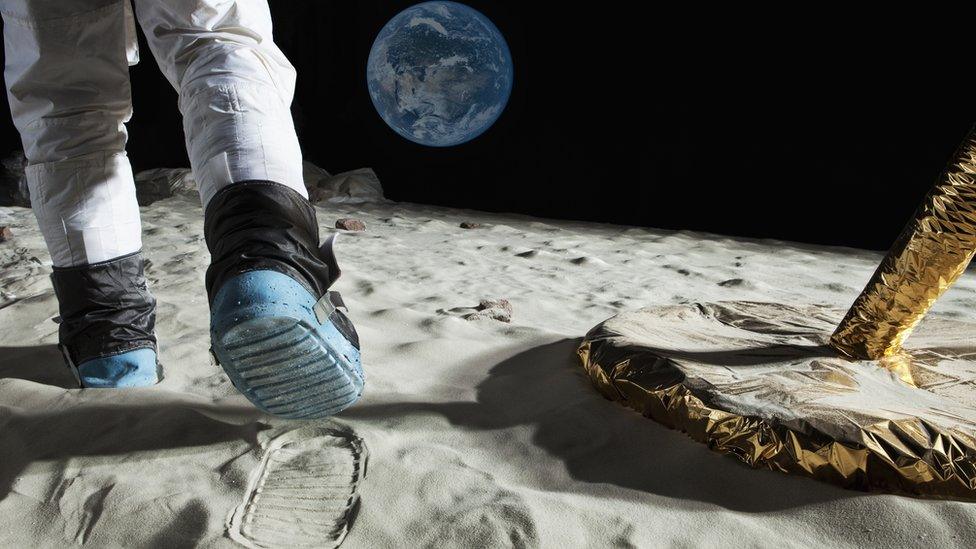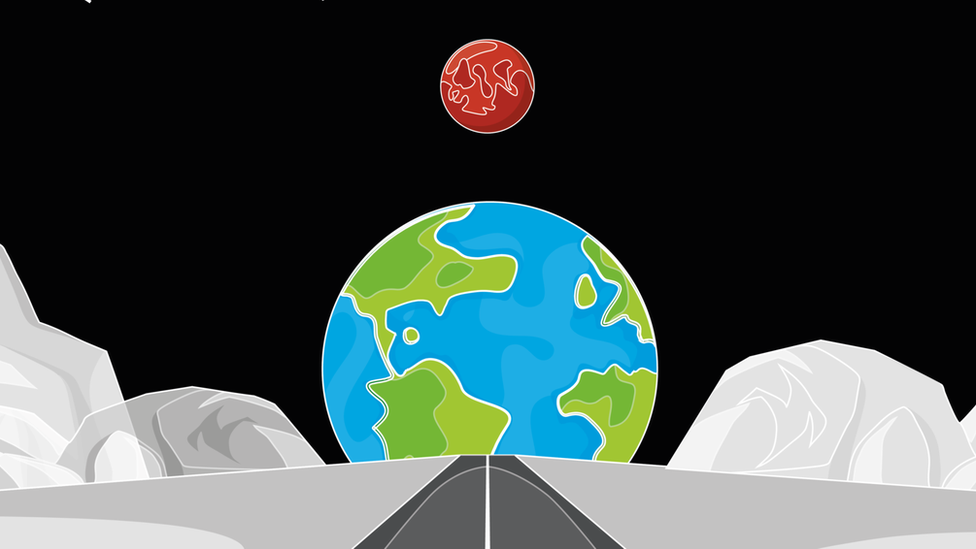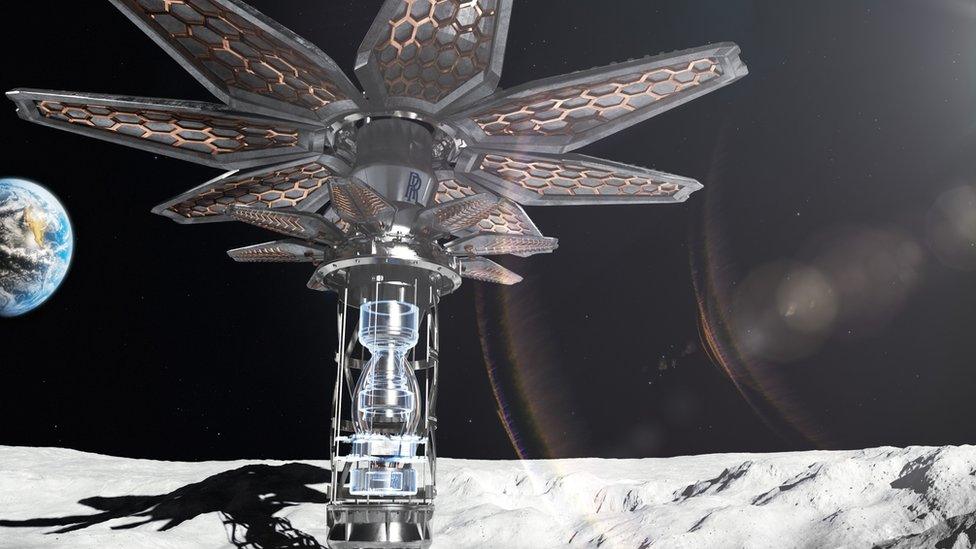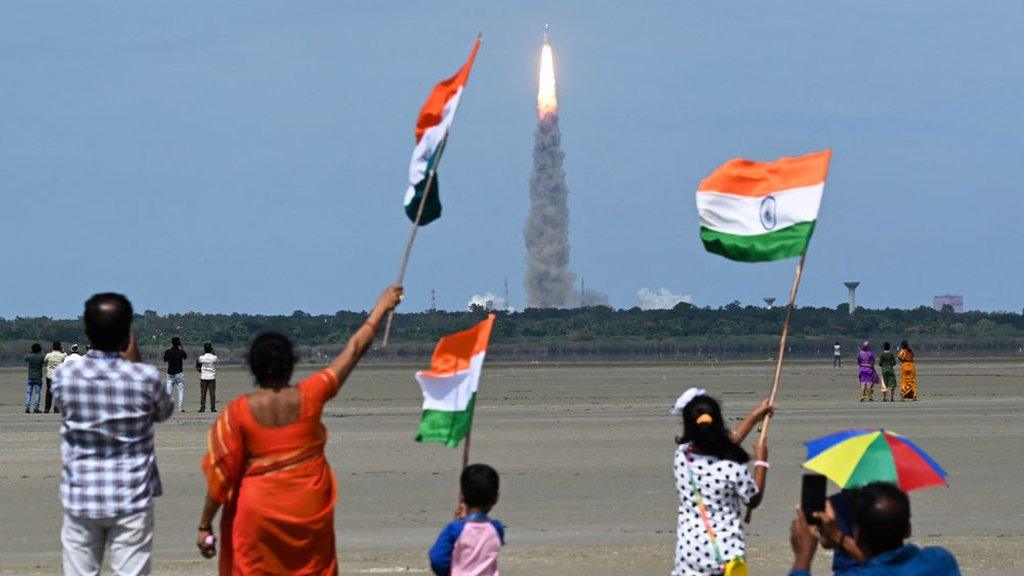Moon dust turned into roads using giant laser beam
- Published
- comments

Melting Moon dust could create paved surfaces on the lunar surface, such as roads and landing pads
Travelling to the Moon is pretty out of this world, but there is one problem - the dust, it gets everywhere.
Just like finding sand in your socks after a day at the beach, Moon dust gets embedded in astronauts' suits and their equipment.
The dust can wear away space suits, clog up machinery, make moving around on the surface difficult and interfere with scientific instruments.
So now scientists have found a way to melt the dust using a giant laser beam, making flat surfaces for roads and landing areas.

An experiment used a laser beam to melt a triangular pattern in fake Moon dust
Developed by the European Space Agency (ESA), the project called PAVER used the giant laser to melt fake Moon dust.
The beam, just 4.5cm wide, melted the dust into a smooth, glass-like material, which was then cut into triangle shapes.
Similar to a jigsaw, each triangle of melted Moon dust could then be clipped together to create solid surfaces.
However, it's a slow process and would take about 100 days to create a 10 x 10m landing spot, which is about one fifth the size of a basketball court on Earth.

Moon dust is also known as regolith. Regolith is loose dust, broken rocks, and other materials found on planets like Earth and Mars and moons such as our own.
Giant magnifying glass
If the project is used on the Moon, the laser beam won't be needed and, a bit like a giant magnifying glass, a lens will direct light from the Sun into a hot beam instead.
But, there are potential problems. Not only will the giant lens need to be transported to the Moon, as landing craft touch down, thrusters throw up tons of Moon dust, meaning the lens could have its own performance affected by the dust too.
"It's very loose material, there's no atmosphere, gravity is weak, so the dust gets everywhere," said Prof Jens Günster, of the Federal Institute of Materials Research and Testing in Berlin.

The European Space Agency's, PAVER project could eventually see the same method create roads on Mars
'Streets on the Moon, who needs that?'
Several space agencies across the world are planning Moon missions.
And, over the next ten to 20 years, there are hopes for permanent lunar bases housing people on the Moon for long periods of time.
Explaining that there could be quite a lot of Moon traffic in the coming years, Professor Günster says: "You might think: 'Streets on the Moon, who needs that?
"No one would be happy to be covered in dust from another rocket."
Learn about the history of explorations in space
- Published10 September 2023

- Published22 August 2023

